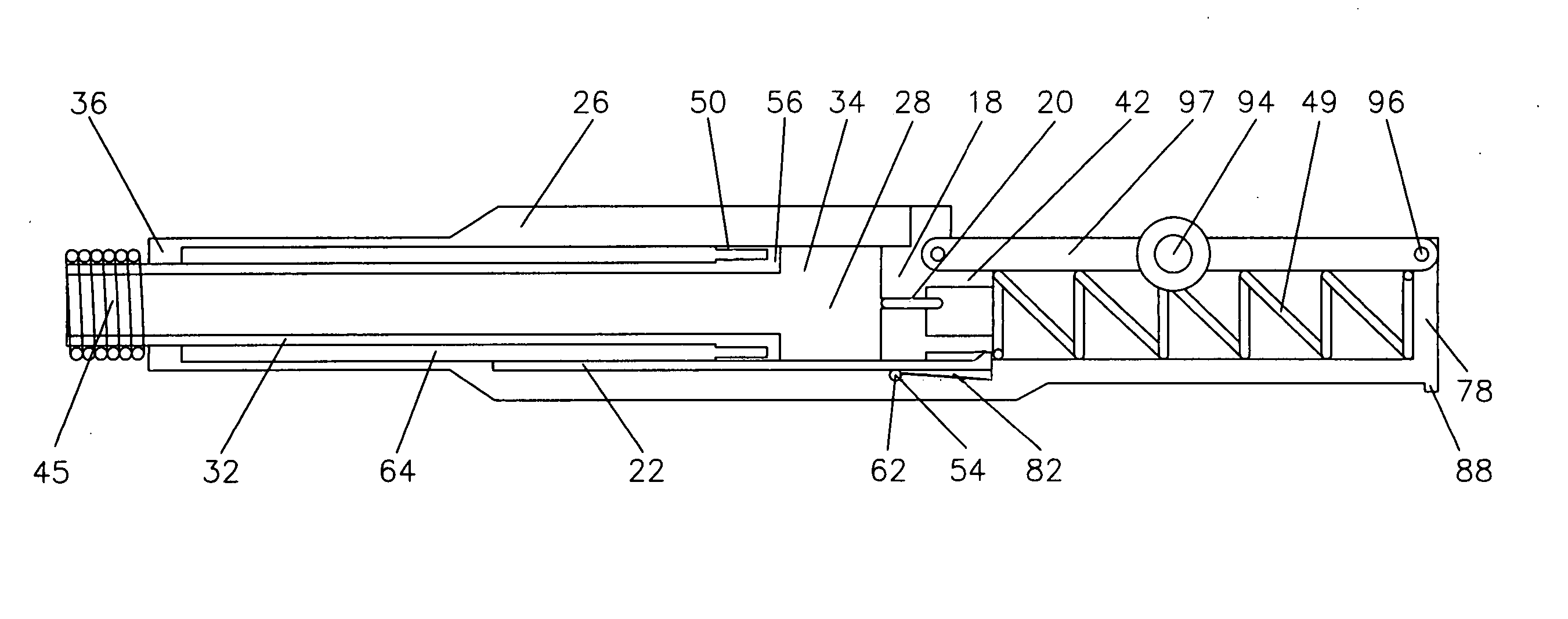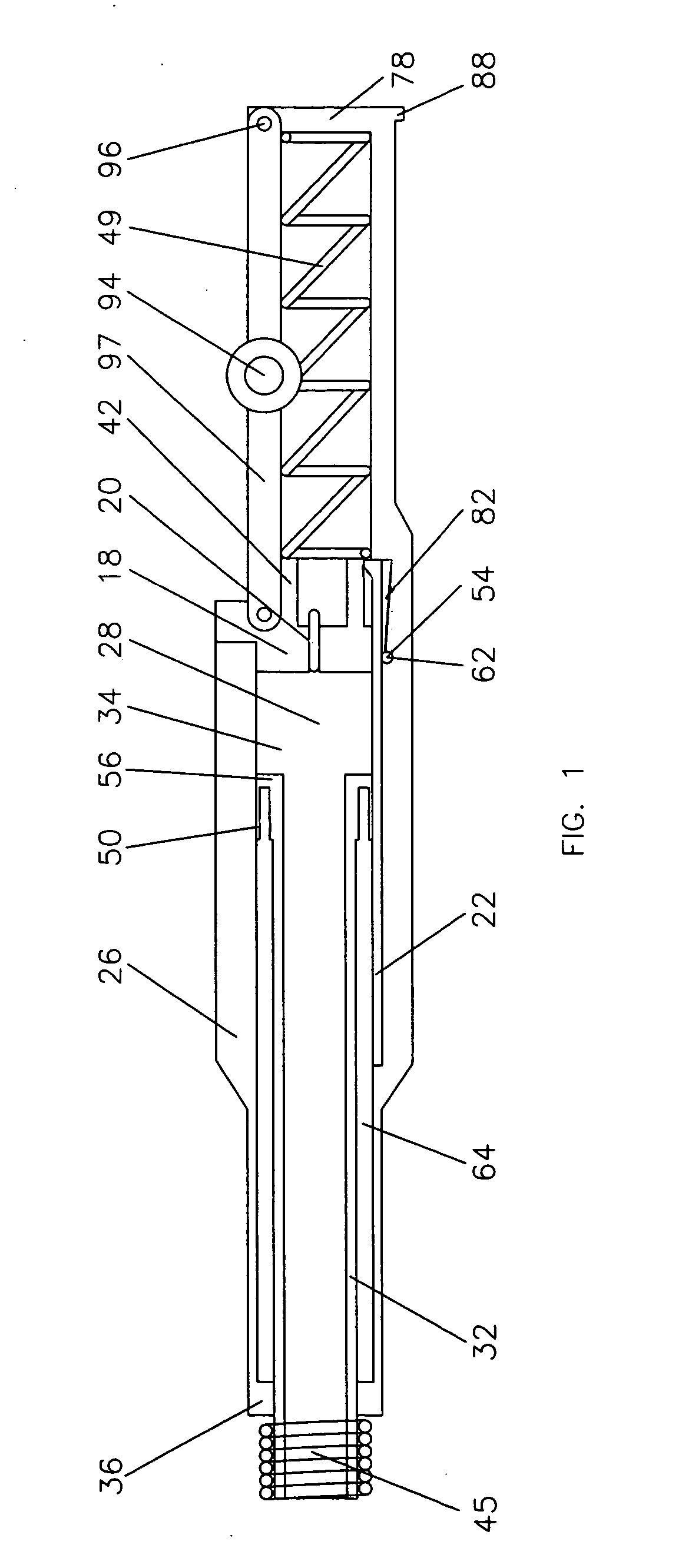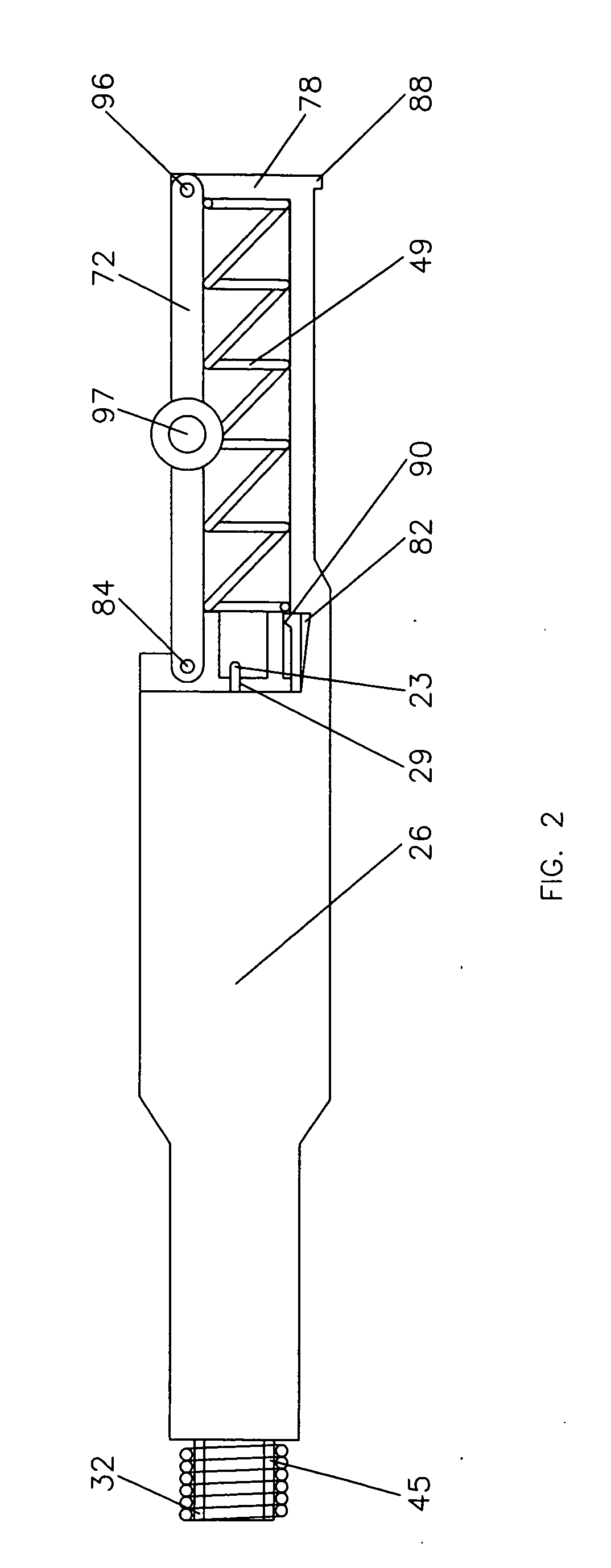Floating barrel handgun method of recoil elimination
a floating barrel and handgun technology, applied in the field of firearms, can solve the problems of difficult automatic manipulation of ablative gaskets in mechanical ways, the danger of behind the gun, and the danger of personnel nearby, and achieve the effect of ensuring safety
- Summary
- Abstract
- Description
- Claims
- Application Information
AI Technical Summary
Benefits of technology
Problems solved by technology
Method used
Image
Examples
Embodiment Construction
[0104] The firing mechanism of the gun comprises a forwardly biased longitudinal firing pin (23) slidably mounted in a tubular aperture (29) centrally located in breech block (18). The gun is actuated by manual retraction of trigger (74) causing hammer (80) positioned in handle (86) to move against the action of a spring [not shown]. Hammer (80) (FIG. 6) rises from location in handle (86), moving through an opening in a sliding plate or cradle (92), an opening in external barrel (26) and an opening in the rear of breech block (18), (openings not shown), striking rear end of firing pin (23). Hammer (80) is positioned in handle (86) of gun beneath firing pin (23) to eliminate the need for a long or inertial type firing pin (23).
[0105] Trigger (74) is operated by trigger assembly (not shown). Trigger assembly forms no part of subject invention and trigger assemblies comprising a spring, sear and notch are well known in the art and may be positioned in handle (86) so that when trigger ...
PUM
 Login to View More
Login to View More Abstract
Description
Claims
Application Information
 Login to View More
Login to View More - R&D
- Intellectual Property
- Life Sciences
- Materials
- Tech Scout
- Unparalleled Data Quality
- Higher Quality Content
- 60% Fewer Hallucinations
Browse by: Latest US Patents, China's latest patents, Technical Efficacy Thesaurus, Application Domain, Technology Topic, Popular Technical Reports.
© 2025 PatSnap. All rights reserved.Legal|Privacy policy|Modern Slavery Act Transparency Statement|Sitemap|About US| Contact US: help@patsnap.com



